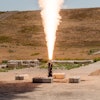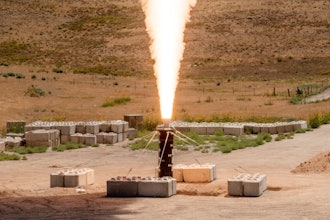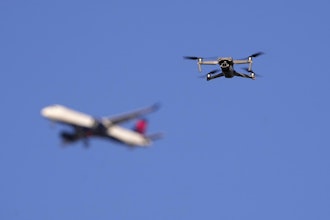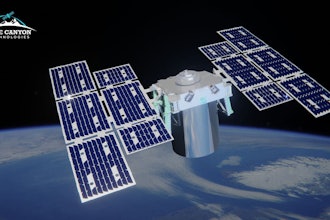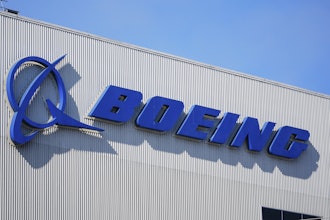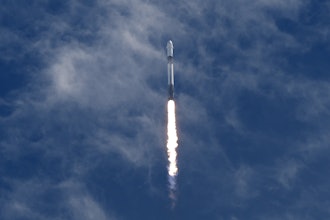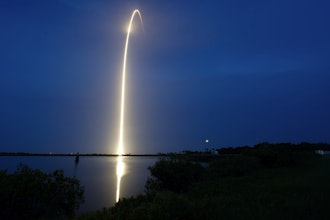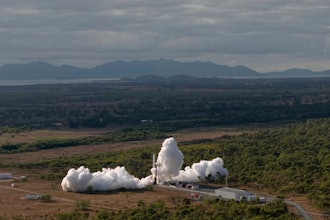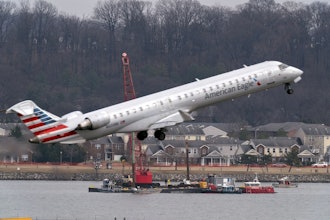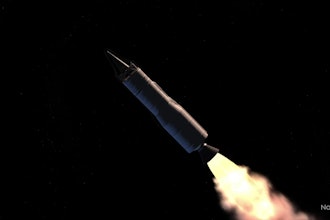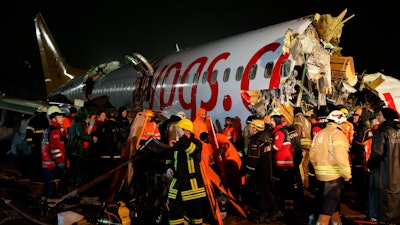
ISTANBUL (AP) — A Turkish airliner skidded off a runway, crashed into a ditch and broke apart while landing in bad weather in Istanbul Wednesday, killing three people and injuring dozens more. Passengers had to scramble through the split fuselage to escape.
The aircraft, operated by low-cost carrier Pegasus Airlines, was arriving at Istanbul's Sabiha Gokcen airport from the western Turkish city of Izmir with 183 passengers and crew on board when it had what the Transportation Ministry described as a “rough landing.”
Istanbul Gov. Ali Yerlikaya said the plane failed to "hold onto the runway" and skidded some 50-60 meters (yards) before it dropped into the ditch from a height of about 30 meters (98 feet.)
“We are deeply saddened ... (But) we are very happy that we escaped a greater accident,” Yerlikaya said, adding that the plane could have burst into flames.
Health Minister Fahrettin Koca reported early Thursday that three people had died and 179 required care at multiple hospitals.
Emergency workers, assisted by an excavator, recovered one body from beneath the wreckage before the rescue mission ended.
The airport was shut down after the incident, which occurred at around 6:30 p.m. local time (1530 GMT), and flights were diverted to Istanbul's main airport.
Survivor Dogus Bilgic, 24, told Turkish television channel NTV that he fled the smashed plane by way of a gap near his seat and was one of the first passengers to get out.
“We traveled (on the runway) for some 20 or 30 seconds, then all of a sudden we flew off the runway,” he said while seated in a wheelchair because of a leg injury. “It happened in seconds.”
“I was seated in 25C. I believe the plane broke apart at row 26,” Bilgic recalled, adding that he threw himself out of the plane when he saw the opening.
“The front (of the plane) was in a terrible state. I saw, after I was on the ground, that it had completely broken apart,” he said.
As other passengers emerged from the wreckage, Bilgic said he helped two or three to the ground.
"I carried them somewhere because they weren’t doing as well as us,” he said, then ran away from the plane with others, fearing a possible explosion.
“There was complete chaos," he said.
Video obtained by The Associated Press showed the wreckage of the plane in a field adjacent to the end of the runway. The video shows heavy rain and strong winds at the time, with smoke coming from one of the engines as passengers climb out of the fuselage onto the wings of the plane and away from the crash site.
Eyewitness Hasan Eraydin, who shot the video, said he had been driving home from work when he heard a rumble.
“We were about 30 meters away … we tried to get to the scene to help, but there was some sort of a canal in between and it was impossible. We thought ‘God willing, no one has died'.”
Dozens of rescue crew members swarmed around the flood-lit fuselage, including around the cockpit, which had flipped over. The plane was a Boeing 737 that was 11 years old, according to the flight tracking website Flightradar24.
“We continue to receive reports out of Istanbul, Turkey, regarding the accident involving Pegasus Airlines," said Boeing in a statement. "Our top concern right now is for the safety and wellbeing of the passengers and crew onboard. We are in contact with our airline customer and have offered them our support. We stand ready to assist in any way possible.“
NTV said the injured included the plane’s two pilots, who it said were in serious condition. The television channel broadcast a recording of the communications between the pilots and air traffic control in which the pilots are told that previous flights had reported strong tail winds.
"According to the information we have, there was a rough landing. The accident occurred after (the plane) could not decelerate and rammed into a field from the end of the runway," Turkey's state-run Anadolu news agency quoted Transportation and Infrastructure Minister Mehmet Cahit Turan as saying.
Prosecutors opened an investigation of the accident, Anadolu reported.
Pegasus is a privately-owned, low-cost carrier based in Istanbul that flies 97 routes, mostly within Turkey and to destinations in Europe, the Middle East and Central Asia. It is majority owned by Turkish billionaire Sevket Sabanci and his family, who have big investments in the country in areas as varied as real estate, clothing, health clubs and packaging materials.
The accident comes a month after a Pegasus plane with 164 people on board skidded off the runway at the same airport in Istanbul. There were no deaths or injuries in that incident on Jan. 7.
In January 2018, another Boeing 737 in the Pegasus fleet slid off a runway at northeastern Turkey’s Trabzon Airport and down a dirt embankment. The plane came to rest in the dirt above the Black Sea with its nose pointed toward the water. None of the 168 passengers and crew members were injured.
Planes are designed to absorb impact forces in the bottom of the fuselage to improve the chances that passengers in the cabin above will survive.
In 2013, the tail of an Asiana Airlines Boeing 777 broke off after the jet hit a seawall during approach to San Francisco International Airport. Three people died, 49 were seriously injured and scores more suffered minor injuries, according to the U.S. accident report.
That same year, a Lion Air Boeing 737 split in two after landing in shallow water short of the runway in Bali, Indonesia. All 101 passengers and seven crew members survived.
____
Fraser reported from Ankara, Turkey. Carlo Piovano in London and David Koenig in Dallas contributed.

